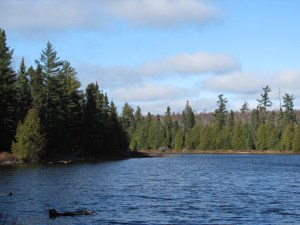
There are more than 83,000 acres of land owned by the state of Minnesota inside the Boundary Waters Canoe Area Wilderness. The fact that the state is restricted in how it can use those lands, and use them to generate revenue, has long been a difficult issue.
The Superior National Forest has now released a plan to swap 30,000 acres of the lands for federal lands outside the wilderness. The Minnesota Department of Natural Resources would be able to choose an equal value of land from 39,000 acres of U.S. government lands elsewhere in the National Forest.
The state lands inside the BWCAW are all School Trust Lands, designated to produce revenue for education funding. According to documents included in the proposal, the project would allow the state to fulfill legal obligations to maximize revenue from the lands.
“Recent legislation clarified that when there is an irrevocable conflict between economic gain and the natural resource, the Minnesota Department of Natural Resources (DNR) is required to give precedence to long-term economic return. In the BWCAW, this mandate directly contradicts the wilderness laws and regulations implemented by the Forest Service. The intent of this School Trust-BWCAW project is to convey lands without wilderness restrictions to the State so that it may fulfill its mandate on School Trust lands. At the same time, the Forest Service would consolidate ownership within the BWCAW to protect the wilderness resource,” the documents read.
The new state lands could be logged or mined or otherwise managed to produce revenue. The lands the Forest Service would acquire within the wilderness would be managed just like they are now, as part of the surrounding wilderness landscape.
Swapping the lands is the wrong way to fix the problem, the Friends of the Boundary Waters Wilderness says. The group is pushing the federal government to purchase the state lands instead, so as not to convert Superior National Forest land to intensively-managed state ownership. The proposal would effectively shrink the National Forest by 47 square miles, the organization says.
“If this exchange moves forward, the public could be denied access to thousands of acres of public land that provide places to hike, hunt, and fish,” said Paul Danicic, executive director, in a statement. “The U.S. Forest Service should go back to the drawing board and come back with a solution that doesn’t shrink the Superior National Forest. We will work with all parties to find the revenue needed for that solution.”
The proposal is in the scoping phase, when the general questions that need to be addressed by environmental review are identified. The public can comment until April 3, 2015, and is invited to five meetings around the state:
- March 9 – Gunflint Ranger Station
2020 W. Highway 61, Grand Marais, MN - March 10 – Laurentian Ranger Station
318 Forestry Road, Aurora, MN - March 12 – Forest Headquarters
8901 Grand Avenue Place, Duluth, MN - March 23 – Kawishiwi Ranger Station
1393 Highway 169, Ely, MN - March 26 – MN Department of Natural Resources
Division of Forestry- Headquarters
500 Lafayette Rd St. Paul, MN
Comments can be provided via the following means:
- Email: comments-easternsuperior@fs.fed.us
- Fax: 218-626-4398
- In person: At the Forest Headquarters, 8:00 a.m. to 4:30 p.m., Monday through Friday or by calling 218-626-4368.
- Written: Chip Weber, Acting Forest Supervisor, Attn: School Trust Land Exchange, Forest Headquarters, 8901 Grand Avenue Place, Duluth, MN 55808

